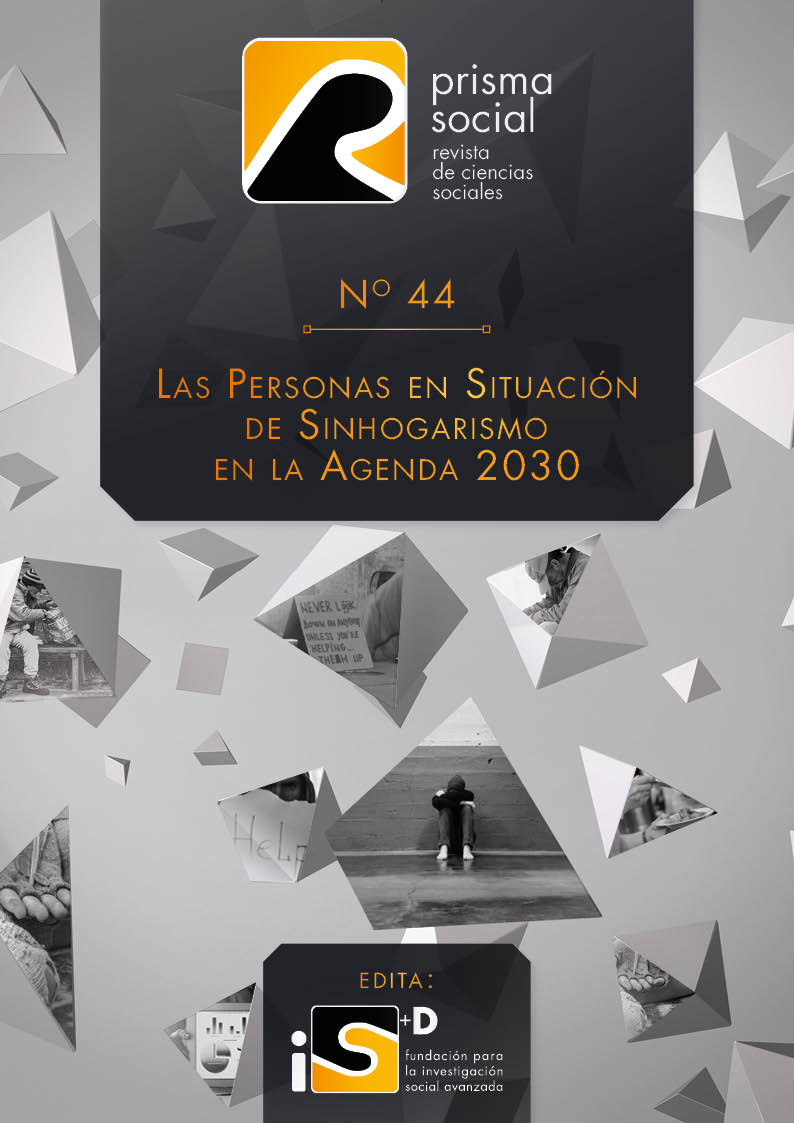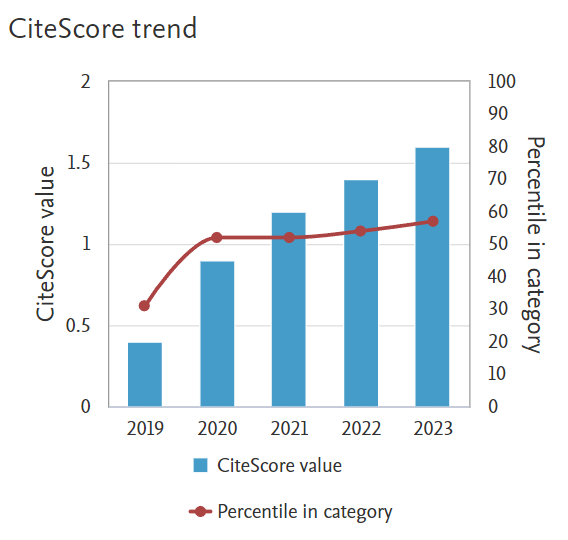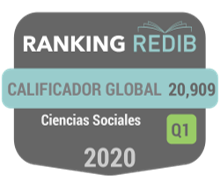Gender particularities in the risk factors and paths of homelessness:
A cross-sectional, descriptive, exploratory study in Valencia, Spain
Keywords:
Keywords: homelessness; women; gender; census; Night-SAbstract
There is still a large lack of data related to homelessness, especially in the case of women, due to their traditional invisibility. The first objective of this exploratory study was to identify homeless women in the most visible categories of homelessness in the city of Valencia (Spain). Secondly, it was aimed to identify possible gender differences in the determinants and their trajectories of homelessness. For this purpose, the Night-S methodology was implemented, identifying 754 homeless people who were on the streets or in homeless shelters. Finally, 79 homeless women and 210 homeless men were surveyed. This is a descriptive, exploratory, cross-sectional and multicentre study. The results show the high incidence of gender violence and mental health as the causes of homelessness in women. Sexual assaults are frequent during their trajectories. Women make more use of social and labour market resources than men. They also have more contact with family and friends. The conclusions highlight the need to incorporate the gender perspective into public policies and social intervention with homeless people. Likewise, new ways of counting and accessing women in the less visible categories of homelessness are needed.
Downloads
References
Alonso, A., Palacios, J. & Iniesta, A. (2020). Mujeres sin hogar en España. Narrativas sobre género, vulnerabilidad social y efectos del entramado asistencial. OBETS. Revista de Ciencias Sociales, 15(2), 375-404. https://doi.org/10.14198/OBETS2020.15.2.01
Asamblea Médico Mundial (2013). Declaración de Helsinki. Principios éticos para las investigaciones médicas en seres humanos. https://www.wma.net/es/policies-post/declaracion-de-helsinki-de-la-amm-principios-eticos-para-las-investigaciones-medicas-en-seres-humanos/
Baptista, I. (2010). Women and homelessness in Europe. En E. O’Sullivan, V. Busch-Geertsema, D. Quilgars and N. Pleace (Eds.), Homelessness Research in Europe (163–86). FEANTSA.
Baptista, I., Benjaminsen, L., Pleace, N., & Busch-Geertsema, V. (2012). Counting homeless people in the 2011 housing and population census. Feantsa.
Biscotto, P. R., De Jesus, M. C. P., Da Silva, M. H., De Oliveira, D. M., & Merighi, M. A. B. (2016). Understanding of the life experience of homeless women. Revista Da Escola De Enfermagem Da Usp, 50(5), 749-755. https://doi.org/10.1590/s0080-623420160000600006
Botija, M. & Caravantes, G. (2023). Sinhogarismo, vulnerabilidad(es) e instrumentos de medición. En Botija M., Caravantes, G. & Matamala, E. (Eds.), Las realidades (in)visibilizadas de los sinhogarismos (11-40). Tirant humanidades.
Botija, M., Galán-Sanantonio, A., & Gallén-Granell, E. (2022). Hacer que cada persona cuente: el censo colaborativo y participativo de personas sin hogar en la ciudad de València. TERRA. Revista de Desarrollo Local, (11), 217-224. https://doi.org/10.7203/terra.11.25604
Botija, M., & Matamala, E. (2022). II Censo de personas sin hogar en la ciudad de Valencia. Ayuntamiento de Valencia.
Bretherton, J. (2020). Women’s Experiences of Homelessness: A Longitudinal Study. Social Policy and Society, 19(2), 255-270. https://doi.org/10.1017/s1474746419000423
Bretherton, J. & Mayock, P. (2021) Women's homelessnes: European evidence review. FEANTSA https://doi.org/10.15124/yao-3xhp-xz85
Bretherton, J. & Pleace, N. (2018). Women and Rough Sleeping: A Critical Review of Current Research and Methodology. University of York https://eprints.whiterose.ac.uk/138075/
Broll, R., & Huey, L. (2020). “Every Time I Try to Get Out, I Get Pushed Back”: The Role of Violent Victimization in Women’s Experience of Multiple Episodes of Homelessness. Journal of Interpersonal Violence, 35(17-18), 3379-3404. https://doi.org/10.1177/0886260517708405
Brown, J. B., Lent, B., Brett, P. J., Sas, G., & Pederson, L. L. (1996). Development of the Woman Abuse Screening Tool for use in family practice. Family Medicine-Kansas City, 28, 422-428.
Busch-Geertsema, V., Edgar, W., O’Sullivan, E., & Pleace, N. (2010). Homelessness and homeless policies in Europe: Lessons from research. European Commission. http://noticiaspsh.org/IMG/pdf/4099_Homeless_Policies_Europe_Lessons_Research_EN.pdf
Cooper, A. (2016). Time seizures and the Self: Institucional temporalities and Self-preservation among Homeless Women. Cult Med Psychiatry, 39(1), 162-185. https://doi.org/10.1007/s11013-014-9405-8
De Vet, R., Beijersbergen, M. D., Lako, D. A. M., Van Hemert, A. M., Herman, D. C., & Wolf, J. (2019). Differences between homeless women and men before and after the transition from shelter to community living: A longitudinal analysis. Health & Social Care in The Community, 27(5), 1193-1203. https://doi.org/10.1111/hsc.12752
DeWard, S. L., & Moe, A. M. (2010). «Like a Prison!»: Homeless women’s narratives of surviving shelter. Journal of Sociology and Social Welfare, 37(1). https://doi.org/10.15453/0191-5096.3496
Edin, K. (1992). Counting Chicago´s homeless: An assessment of the Census Bureau´s “Street and Shelter Night”. Evaluation review, 16(4), 365-375.
Federación Europea de Organizaciones Nacionales que trabajan con las personas sin hogar (FEANTSA) (2017). Tipología europea de sin hogar y exclusión residencial http://www.feantsa.org
Fondation Abbé Pierre, FEANTSA (2022) Seventh Overview of Housing Exclusion in Europe. https://links.uv.es/u5kURem
Gaetz, S.; Barr, C.; Friesen, A.; Harris, B.; Hill, C.; Kovacs-Burns, K.; Pauly, B.; Pearce, B.; Turner, A. & Marsolais, A. (2012) Canadian Definition of Homelessness. Canadian Observatory on Homelessness Press. https://www.homelesshub.ca/sites/default/files/COHhomelessdefinition.pdf
Gil-Salmerón, A., Yang, L., Yang, L., Rieder, A., & Grabovac, I. (2021). Differences in health status, health behaviour and healthcare utilisation between Immigrant and native homeless people in Spain: An exploratory study. Health & Social Care in The Community, 29(3), 856-866. https://doi.org/10.1111/hsc.13313
Herrero, I. (2003). Mujeres sin hogar y violencia de género: la triple invisibilidad. ARQ, 16, 265-268. https://dialnet.unirioja.es/servlet/articulo?codigo=857754
Kennedy, S. (1985) But Where Can I Go? Homeless Women in Dublin. Arlene House.
MacDonald, S. (2014). Managing Risk: Self-Regulation among Homeless Youth. Child and Adolescent Social Work Journal, 31(6), 497-520. https://doi.org/10.1007/s10560-014-0337-5
Martin, R., Panadero, S., & Vázquez, J. J. (2016). Mujeres sin hogar en Madrid. En C. Tejedor, F. J. Pascual, G. Ros, A. Guerrero, J. Aguado, & M. A. Hidalgo (Eds.), Quintas jornadas de jóvenes investigadores de la Universidad de Alcalá. Humanidades y Ciencias Sociales (263-270). Universidad de Alcalá. http://hdl.handle.net/10017/26543
Matuli? Domandzic, V., Munté Pascual, A., & De Vicente Zueras, I. (2020). Sinhogarismo Femenino: Una aproximación a la intersección entre género, edad y procesos migratorios. Research on Ageing and Social Policy, 8(1), 57-85. https://doi.org/10.17583/rasp.2020.4724
Matuli?, M.V., De-Vicente, I., Boixadós, A. & Caïs, J. (2019). Las mujeres sin hogar: realidades ocultas de la exclusión social. Trabajo Social Global, 9(16), 49-68. https://doi.org/10.30827/tsggsw.v9i16.8198
Mayock, P., Sheridan, S., & Parker, S. K. (2015). ‘It’s just like we’re going around in circles and going back to the same thing . . .’: The Dynamics of Women’s Unresolved Homelessness. Housing Studies, 30(6), 877-900. https://doi.org/10.1080/02673037.2014.991378
McVicar, D., Moschion, J., & Van Ours, J. C. (2015). From substance use to homelessness or vice versa? Social Science & Medicine, 136, 89-98. https://doi.org/10.1016/j.socscimed.2015.05.005
Milaney, K., Williams, N., Lockerbie, S. L., Dutton, D. J., & Hyshka, E. (2020). Recognizing and responding to women experiencing homelessness with gendered and trauma-informed care. BMC Public Health, 20(1). https://doi.org/10.1186/s12889-020-8353-1
North, C. S., & Smith, E. M. (1993). A comparison of homeless men and women: Different populations, different needs. Community Mental Health Journal, 29(5), 423–431. https://doi.org/10.1007/BF00754410
Phipps, M., Dalton, L., Maxwell, H., & Cleary, M. (2019). Women and homelessness, a complex multidimensional issue: findings from a scoping review. Journal of Social Distress and The Homeless, 28(1), 1-13. https://doi.org/10.1080/10530789.2018.1534427
Pichiule, M., Gandarillas, A., Pires, M., Lasheras, L., & Ordobás, M. (2020). Validación de la versión corta del Woman Abuse Screening Tool (WAST) en población general. Gaceta Sanitaria, 34, 595-600. https://dx.doi.org/10.1016/j.gaceta.2019.04.006
Plazaola-Castaño, J., Ruiz-Pérez, I., & Hernández-Torres, E. (2008). Validación de la versión corta del Woman Abuse Screening Tool para su uso en atención primaria en España. Gaceta Sanitaria, 22(5), 415-420.
Pleace, N. (2016). Exclusion by Definition: The Under-representation of Women in European Homelessness Statistics. En Mayock, P. y Bretherton, J. (Eds.), Women’s Homelessness in Europe (105-126). Palgrave Macmillan. https://doi.org/10.1057/978-1-137-54516-9_5
Sales, A., Uribe, J. & Marco, I. (2015). Diagnosis 2015. La situació del sensellarisme a Barcelona. Evolució i politiques d’intevenció. Ajuntament de Barcelona: XAPSLL. https://www.barcelona.cat/barcelonainclusiva/ca/2015/12/diagnosi2015.pdf
Smith, A. (2015). Can we compare homelessness across the Atlantic? A comparative study of methods for measuring homelessness in North America and Europe. European Journal of Homelessness, 9(2), 233-257.https://www.feantsa.org/download/smithejh22015article10329781340955549685.pdf
Strehlau, V., Torchalla, I., Kathy, L., Schuetz, C., & Krausz, M. (2012). Mental health, concurrent disorders, and health care utilization in homeless women. Journal of Psychiatric Practice, 18(5), 349–360.
Tessler, R., Rosenheck, R., & Gamache, G. (2001). Gender differences in self-reported reasons for homelessness. Journal of Social Distress & the Homeless, 10(3), 243–254. https://doi.org/10.1023/A:1016688707698
Unzueta, M. Á. B. (2010). La interseccionalidad como desafío al mainstreaming de género en las políticas públicas. Herri-arduralaritzazko euskal aldizkaria, 87, 225-252. https://doi.org/10.47623/ivap-rvap.87.88.2010.07
Upshur, C. C., Jenkins, D., Weinreb, L., Gelberg, L., & Orvek, E. A. (2017). Prevalence and predictors of substance use disorders among homeless women seeking primary care: An 11 site survey. The American Journal on Addictions, 26(7), 680–688. https://doi.org/10.1111/ajad.12582
Vázquez, J. A., Panadero, S., & Pascual, I. (2019). The Particularly Vulnerable Situation of Women Living Homeless in Madrid (Spain). Spanish Journal of Psychology, 22. https://doi.org/10.1017/sjp.2019.58
Wolf, J.; Anderson, I.; van den Dries, L. & Filipovi? Hrast, M. (2016). The Health of Homeless Women. En Mayock, P. y Bretherton, J. (Eds.), Women’s Homelessness in Europe (155-178). Palgrave Macmillan https://doi.org/10.1057/978-1-137-54516-9_5
Downloads
Published
How to Cite
Issue
Section
License
Copyright (c) 2024 Revista Prisma Social

This work is licensed under a Creative Commons Attribution-NonCommercial-NoDerivatives 4.0 International License.
Those authors who publish in this journal accept the following terms:
-
Authors retain copyright.
-
Authors transfer to the journal the right of first publication. The journal also owns the publishing rights.
-
All published contents are governed by an Attribution-NoDerivatives 4.0 International License.
Access the informative version and legal text of the license. By virtue of this, third parties are allowed to use what is published as long as they mention the authorship of the work and the first publication in this journal. If you transform the material, you may not distribute the modified work. -
Authors may make other independent and additional contractual arrangements for non-exclusive distribution of the version of the article published in this journal (e.g., inclusion in an institutional repository or publication in a book) as long as they clearly indicate that the work was first published in this journal.
- Authors are allowed and recommended to publish their work on the Internet (for example on institutional and personal websites), following the publication of, and referencing the journal, as this could lead to constructive exchanges and a more extensive and quick circulation of published works (see The Effect of Open Access).


















